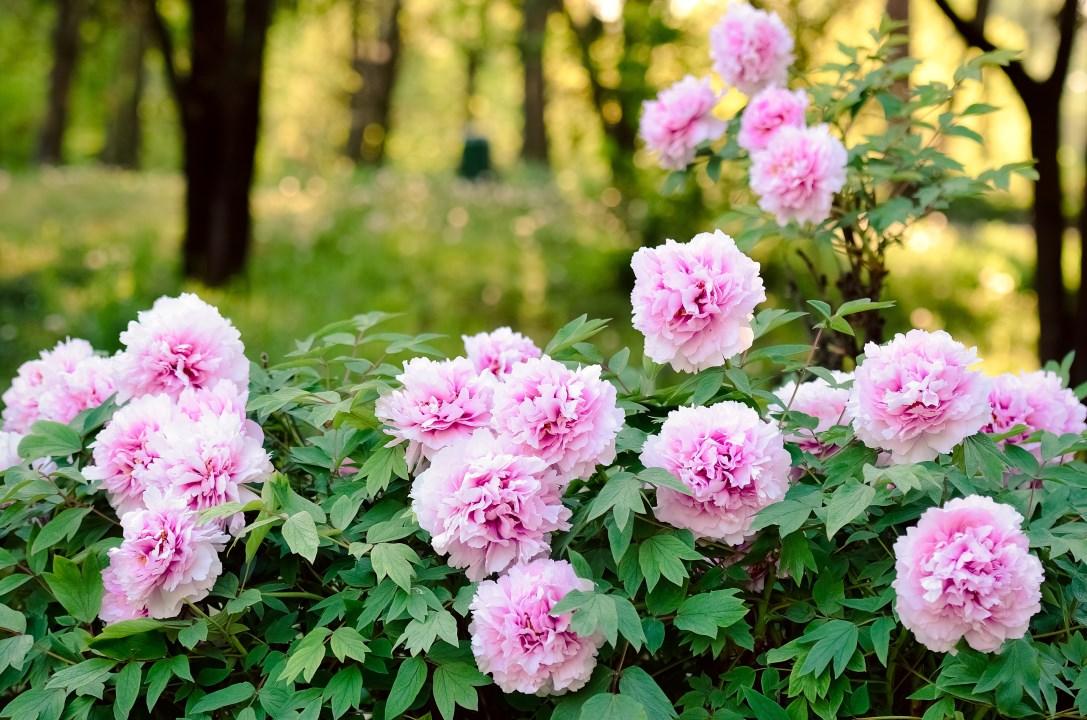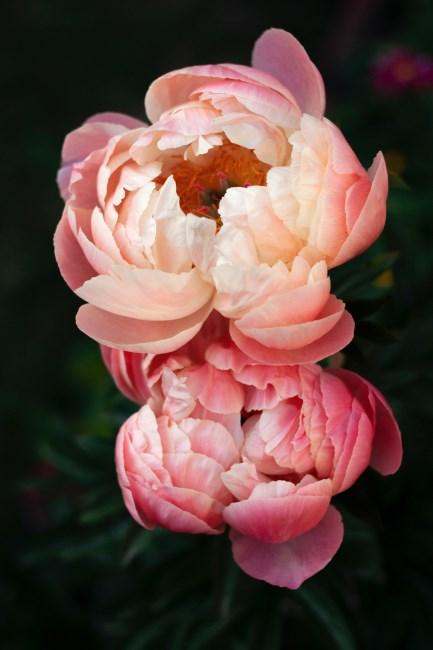
8 minute read
Peonies 1 Native Violets 5 Pesticides and Pollinators 6 Lyme Disease 7 Positive Parenting 9 New Research: Moderate Drinking Provides No Health Benefits 10 Treating Arthritis Through Food 11 In this issue:
Cornell University Cooperative Extension of Warren County
377 Schroon River Road
Advertisement
Warrensburg, NY 12885
Phone: (518) 623-3291 or (518) 668-4881
Visit Our Web Site: www.cce.cornell.edu/warren
Who We Are
Nation-wide, thousands of people in each state tap into their state’s land-grant university research and know-how to make sound confident decisions concerning family, home, business, finances, and the future. In New York State, the land-grant university is Cornell University.
The Cornell Cooperative Extension network brings you the expertise of Cornell University, other land-grant universities across the country and locally-based Extension Educators, volunteers, and other experts through such programs as: horticulture, youth and families, leadership, environment, food, nutrition & health, home environment, and financial management.
Staff
John Bowe, Executive Director & Associate Team Leader
Dan Carusone, 4-H Natural Resources Coordinator
Roxanne Westcott, 4-H Family Living Educator
Sharon Bellamy, Finance Manager
Amy Sabattis, Public Relations/Publications Manager
Michele Baker, Administrative Assistant
Barb Galusha, Administrative Assistant
Joe Phillips, Facilities Coordinator
Board of Directors
Jim Kneeshaw - President
David Strainer - Vice President
David Little - Treasurer
CheriLyn Dempsey - Secretary
Hal Bain
Lisa Earl
Maureen Folk
William Hamelin
Cynthia Muratori
Cornell Administration
Danielle Hautaniemi
Extension Service Committee
Chair - Ben Driscoll
Daniel Bruno
Brad Magowan
Debra Runyon
Mark Smith
Please visit our website for more eventswww.cce.cornell.edu/warren
Facebook & Instagram - Look for CCE Warren
Upcoming Events
Warren County Homesteading & 4-H Youth Fair
Saturday, August 5, 2023, 9:00 AM - 1:00 PM
Great news! We will once again be offering face-to-face project judging, youth talent show, games, and more. There are some exciting changes or topics to discuss related to the fair:
The theme for the 2023 Fair is “Homesteading.” We are asking all youth participants to consider entering anything relating to homesteading...heritage arts, fruits/vegetables, container gardens, animals, natural resources, recycling & upcycling, etc.
Youth exhibits and displays will be judged on THURSDAY, August 3rd from 4pm 7pm at the CCE Training Center.
The Fairbook will be ready by June 1st. However, if you would like to know more about classes that link to the “Homesteading” theme style, here is a short list of classes to get you thinking:
Section 3: Heritage Arts Exhibits
Section 8: Class 14: Grown in NY heritage recipes/varieties
Section 8: Class 17: Canned Foods
Section 10/16/18: Livestock/Poultry/Small Animals
Section 12: Natural Resources
Section 19: Vegetables slower and full size is usually attained by the eighth or ninth year. The adage for peonies is “1st year sleep, 2nd year creep, 3rd year leap.” Plants that have been well cared for often live longer than their owners. Peonies make excellent cut flowers and can be cut when either fully opened or when the buds are “marshmallow” soft. Deadheading of the fragrant blooms should be done before seed production occurs.
Remember that entries can be from school projects, art classes, projects you did for Scouts, etc. They don’t have to be the result of 4-H work specifically. However, if there are guidelines/directions you followed, you should bring those with you for judging.
Exhibits chosen as “State Fair Worthy” will be displayed in the State Fair area.
Bring your best! We look forward to seeing all the great items you have been working on!
If you have special needs as addressed by the Americans with Disabilities Act and need assistance with attending these workshops, please make your needs known by the registration deadline. Reasonable efforts will be made for accommodations.
Care of Tree Peonies
Tree peonies, Paeonia suffruticosa or Chinese tree peony, are hardy to USDA zones 3/4–8. Tree peonies differ from herbaceous peonies in that they develop rough-barked woody stems that do not die down to the ground in the fall. They continue to grow year after year forming a bush and usually attain a height and width of 3–6 feet. Tree peonies have single and double flowers depending on their cultivar. The blossoms of tree peonies are generally larger in size (8 to 12 inches across) and flower about two weeks earlier than their herbaceous cousins.
Planting Herbaceous Peonies
Peonies prefer full sun (more than six hours of direct sun) and well drained, well tilled soil. The soil pH should be slightly acidic, 6.0–6.2. Have the soil pH tested before you plant. Compost should be mixed into the soil about a foot deep before planting in the fall. A small amount of bonemeal or superphosphate may be added and mixed well into the existing soil. Choose the site carefully. Do not plant too close to trees as the tree roots will compete for food and water. In a bed or border, space herbaceous peonies 3–4 feet apart for each plant. Dig a hole large enough to accommodate the root system. Plant peonies with their red eye buds facing upward about 2 inches below the soil line. Shallow planting of the eye buds encourages flower production. The roots should be planted at a level of 8 –10 inches deep. Fill the hole with soil, tamp lightly and water thoroughly.
For the first winter it is a good idea to loosely mulch over the crown with about one – two inches of mulch. Any deeper will keep the eye buds too warm and flowering will not occur. The mulch should be removed in spring to allow the new growth to come to the surface.
Planting Tree Peonies
These plants are usually grown in containers for nurseries. Some are shipped from mail order companies as bare root plants. Containerized plants may be planted from April to November before the ground freezes. Tree peonies closely resemble woody shrubs and should be planted as early in the season as possible to allow good establishment of the root system. Plant the tree peony deeply to permit its own roots to form more rapidly and abundantly. The graft of the woody stem (scion) and root (understock) is very sensitive. Inspect the union of the scion and root stock. The root stock should be at least 5–6 inches below the ground level. This is especially important if you are planting a bare root specimen. Graft sites need to be planted deeply so the plant can eventually develop its own root system and no longer depend on the nurse root upon which it was grafted. Mulching 4–6 inches should be done in winter. Many of the larger sized tree peonies should have protection from heavy winds.

Fertilization of peonies
Fertilize shortly after bloom is finished with a balanced slow release plant food (3-5-5 or 5-10-10). Care should be taken not to fertilize too close to the crown. Do not use a high nitrogen fertilizer which tends to produce spindly foliage and few or no blooms. Once every few years, one or two handfuls of bone meal may be added around each plant and gently scratched into the soil.
Fall Cleanup
Herbaceous peonies go dormant in our area around October/November. Cut back stems to about 1–2 inches. Damage may occur if cuts are too close to the crown. If there is no fungal damage on the stalks or leaves, they may be composted. Otherwise, discard them. A light layer of mulch (one inch deep) may be applied for the winter over the crown after the ground freezes. Remove this early in the spring.
Dividing Herbaceous Peonies
Herbaceous peonies can be divided in early fall (late September – early October) after stems have been cut off almost to the ground. Divisions should be planted well before the ground freezes to allow roots to acclimate to the new area. Leaving enough stems to handle the plant,
(Continued on page 4) take a spade or shovel and cut around the plant six inches from the outside part of crown. Loosen plant by gently prying. Lift clump out carefully. Wash soil off with a hose so roots can be better seen. Using a sharp knife, cut all roots back to 4–8 inches enabling you to see where they are joined at the crown. The best divisions come from the outside of the plant. A new division should have 3 –5 eye buds and several roots 4–6 inches long. Make sure all cuts are smooth and clean. Cut out all rotten portions and destroy any diseased plants. Plant new divisions immediately following the same directions as if planting a new plant.
Diseases and Insects
Peonies are prone to Botrytis blight, Phytophthora blight and thrips.

Botrytis blight is a fungal disease. Characteristic symptoms appear on young leaf bases in spring when the shoots are about one foot long. Leafy shoots wilt rather suddenly and fall over. A black or brownish rot is seen at the base of leaves and stem. A gray mold can be seen on stalks which eventually is transferred to buds and blossoms causing them to turn brown and rot.
Management – In fall cut stalks down and destroy. Clean up leaves and debris. If using mulch over winter, remove in early spring. Avoid planting in areas of standing water. In spring a fungicide labeled for peonies may be used when new shoots break through the ground. Another application should be made two weeks later. If any young shoots wilt in the spring, they should be removed promptly.
Phytophthora blight is similar to Botrytis except it forms no mold and is never seen covering the bases of leaves or stems. The entire shoot may turn black and die. While Botrytis never invades the crown, Phytophthora often does and causes a black rot which destroys the plant. Fungicides are ineffective. The only remedy is to remove the plant with adjoining soil and get rid of it. Do not compost.
Thrips are minute insects which attack the blooms and suck the juice from them causing brown spots on the light -colored varieties and reddish spots on darker varieties. Remove infected buds and debris and destroy. Chemical pesticides are available. If you choose to use a pesticide, contact your local Cooperative Extension office for specific recommendations.
Common Questions Regarding Peonies
What is disbudding and why is it done?
Disbudding is the removal of side buds commonly seen on peony stems. Its purpose is to allow the plant to pour energy into one flower per stem rather than spread that energy to three flowers. A large center flower will result from this activity. Disbudding should be done as soon as side buds appear on the stems.
Why are there ants on my peonies?
A common fallacy is that ants are needed to pollinate or cause the blooming of a peony. Not so! The ants are attracted to the sticky sweet nectar peonies exude before opening their golf ball-sized buds. Shaking the ants out of the peonies after cutting the stems is a good idea before bringing them indoors.
Why are my peonies not blooming?
If you aren’t seeing blooms after a few years, there are a few possibilities:
1. Buds killed by late frost, fungal disease or thrips – spray with a pesticide labeled for peonies. Follow label directions
2. Planted too close to trees and shrubs – need more nourishment.
3. Planted too deep – replant with eye buds 2 inches below soil line.
4. Ground too dry – water to the bottom of the roots.
5. Prematurity – too young – let them develop.
6. Excessive hot weather – no remedy – wait till next year!
Popular Cultivars of Herbaceous Peonies
● ‘Monsieur Jules Elie’ – fragrant double rose pink blooms
● ‘Kansas’ – double watermelon red blooms. American Peony Society Gold Medal Winner
● ‘Festiva maxima’ – fragrant white double blooms with crimson markings
● ‘Sarah Bernhardt’ – fragrant double seashell pink blooms
Popular Cultivars of Tree Peonies
● ‘Kamada Nishiki’ – semi double purple red blooms
● ‘Alhambra’ – semi double golden yellow blooms
● ‘Hesperus’ – single dusty rose pink blooms with yellow undertones
● ‘Yachiyo Tsubaki’ – single coral pink blooms



